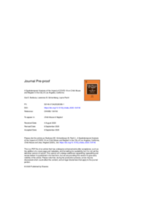Abstract
Background
Severe acute respiratory syndrome coronavirus 2 (SARS-CoV-2; COVID-19) has created an urgent need to identify child abuse and neglect (CAN) and efficiently allocate resources to improve the coordination of responses during a public health crisis.
Objective
To provide unique insights into the spatial and temporal distribution of CAN in relation to COVID-19 outcomes and identify areas where CAN has increased or decreased during the pandemic.
Participants
Children under 18 years old reported to the Los Angeles Police Department for CAN.
Setting
CAN incidents in the city of Los Angeles.
Methods
Negative binomial regression was used to explore associations between the implementation of social distancing protocols and reported CAN during COVID-19. Spatiotemporal analysis identified locations of emerging hot and cold spots during the pandemic. Associations between neighborhood structural factors (e.g., school absenteeism, poverty, unemployment, housing insecurity and birth assets) and hot and cold spot patterns were explored.
Results
There was a statistically significant decline in reports of CAN during the COVID-19 pandemic but no significant trends following the implementation of social distancing measures (e.g. safer at home orders, school closures). Compared to consecutive cold spots, severe housing burden, the number of assets children have at birth, poverty, school absenteeism and labor force participation were significantly associated with new and intensifying hotspots of CAN during the COVID-19 pandemic.
Conclusions
Our findings reinforce the utility of developing intervention strategies that minimize harm to children by targeting resources to specific challenges facing families enduring the COVID-19 experience.

